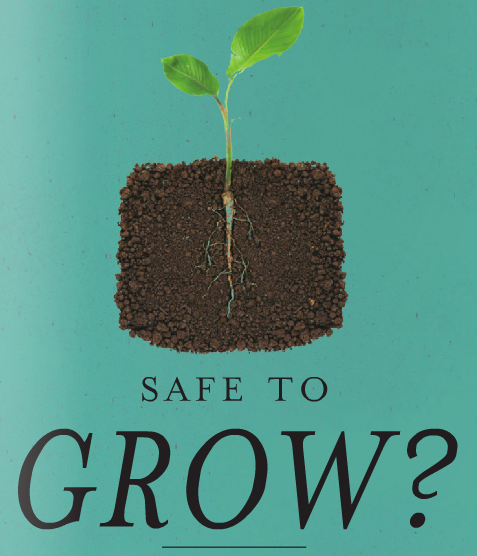Illustration by Kathleen White
Safe to Grow?
by Alex Vuocolo
Jennifer Morales knew that the soil beneath her community garden at A and Indiana streets in North Philadelphia might be contaminated. But without the resources or know-how to test the soil herself, there was no way to be sure.
“There used to be a factory there,” she says. “I didn’t know if it was OK to do any gardening because the soil had never been tested.”
Since she started the garden three years ago, Morales says, none of the seeds planted in the ground have sprouted. She now relies on raised beds, which use imported soil, to keep the garden going.
But Morales may soon find out exactly what is going on beneath the grass. Her garden is among the first candidates for a program that could fund soil testing to as many as 20 sites around the city.
The program is funded by a grant from the Environmental Protection Agency designed to prepare formerly industrial land for redevelopment. Industrial properties along the banks of the Schuylkill River, for example, have received soil testing through the grant. But Philadelphia Parks and Recreation, the Philadelphia Water Department, the Office of Sustainability and the Philadelphia Redevelopment Authority applied for the grant specifically with urban agriculture in mind—a novel use for the decade-old program.
The grant is not the only way urban farmers can test their soil. Penn State Extension, a program of the college’s agriculture department, already offers soil testing and analysis for a nominal fee to landowners and farmers in the region. But the grant reflects an increased effort by city government to support a practice that many Philadelphians now consider an essential service.
The $200,000 Brownfields Assessment Grant will go toward two phases of testing. Elisa Ruse-Esposito, who is overseeing the program at Parks and Recreation, says the goal is to test a mix of existing farms and vacant lots that could be used for urban agriculture in the future.
The first phase entails researching a selected property’s history. A private firm, selected through a bidding process, digs through real estate records and historical maps to determine past uses of the property and how they might have impacted the soil.
“The hope is that these reports will say, ‘Hey, you’re good,’” says Nicole Hostettler, city planner for the Philadelphia Water Department, which plans to integrate a stormwater management plan into each of the sites.
But if the research sends up red flags, such as a prior industrial use at the property, the second phase takes a deeper look. The assessor takes samples of the soil and tests them for concentrations of heavy metals or other chemicals that could affect agriculture.
Parks and Recreation plans to then use the findings to offer a series of recommendations to farmers on how to grow food safely on their sites. This doesn’t necessarily mean remediation, which, Hostettler says, is expensive and would likely require additional grant funding.
Most of the time, Ruse-Esposito says, the recommendations will be practical fixes. It may be necessary, for example, to avoid a certain part of the property or use extra mulch to serve as a buffer. If contamination is widespread, the farm may have to avoid growing in the ground altogether and use raised beds.
Building vertical gardens is a popular approach in other cities, such as Detroit and New York City, but it’s no silver bullet.
“That is a best practice, but there are many best practices,” Ruse-Esposito says. “The main hindrance to only growing in raised beds is that it can be very costly.”
The grant, Ruse-Esposito adds, will help to better understand the full array of options available to local farmers so they find fixes based on their particular needs and resources.
“The city is … bolstering its support for [urban agriculture] in many ways, one of which is this Brownfields grant,” she says.









